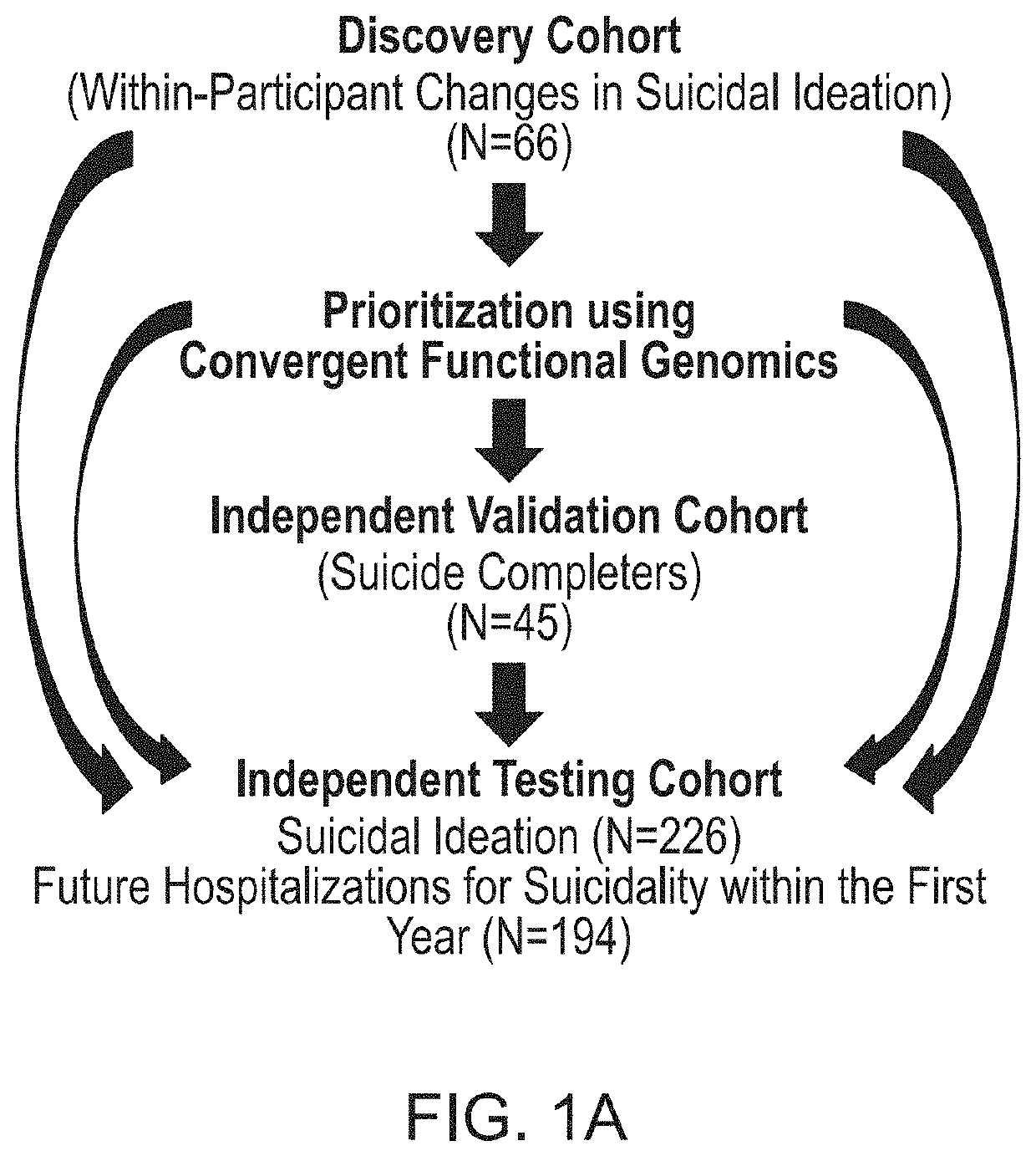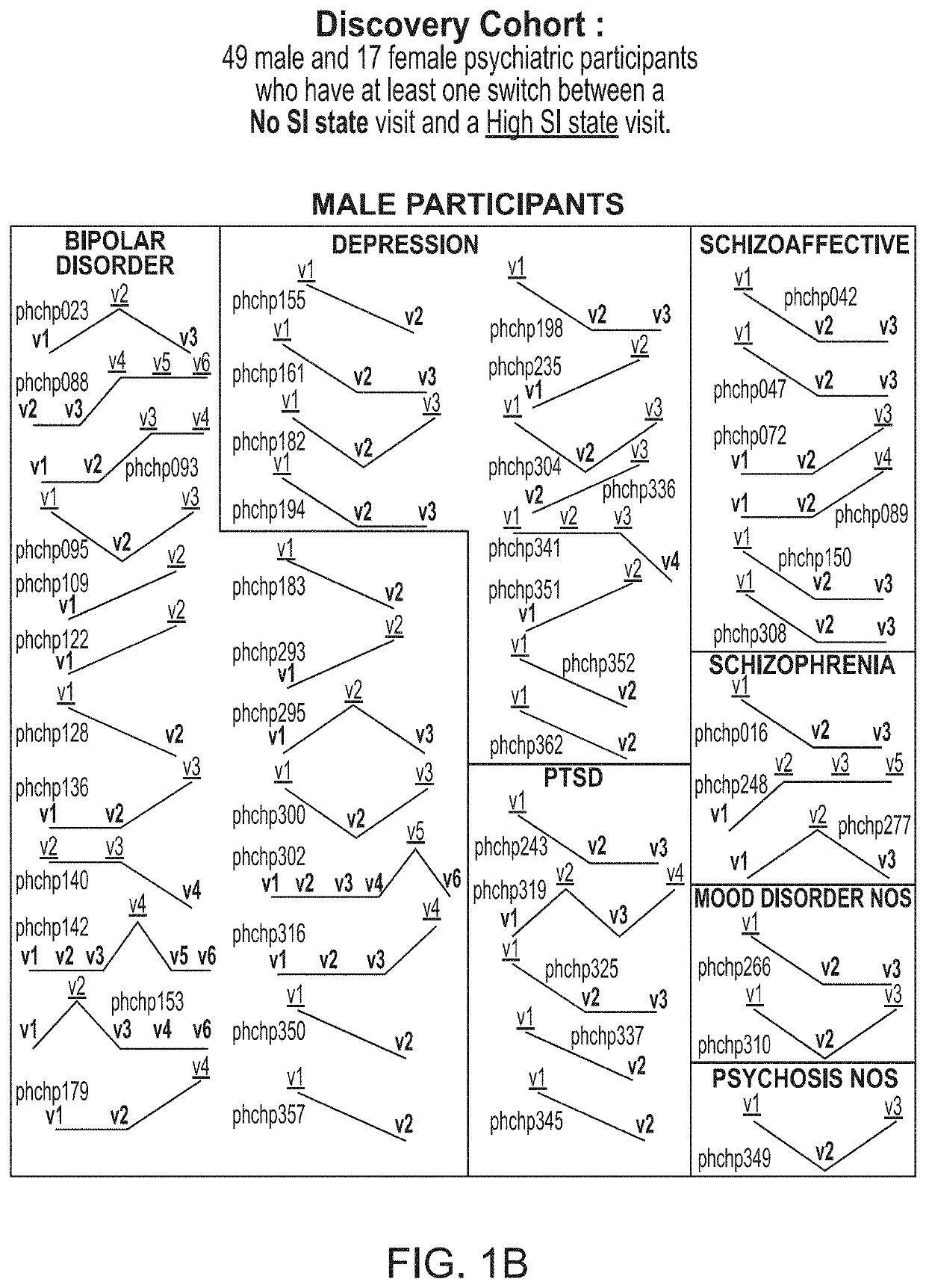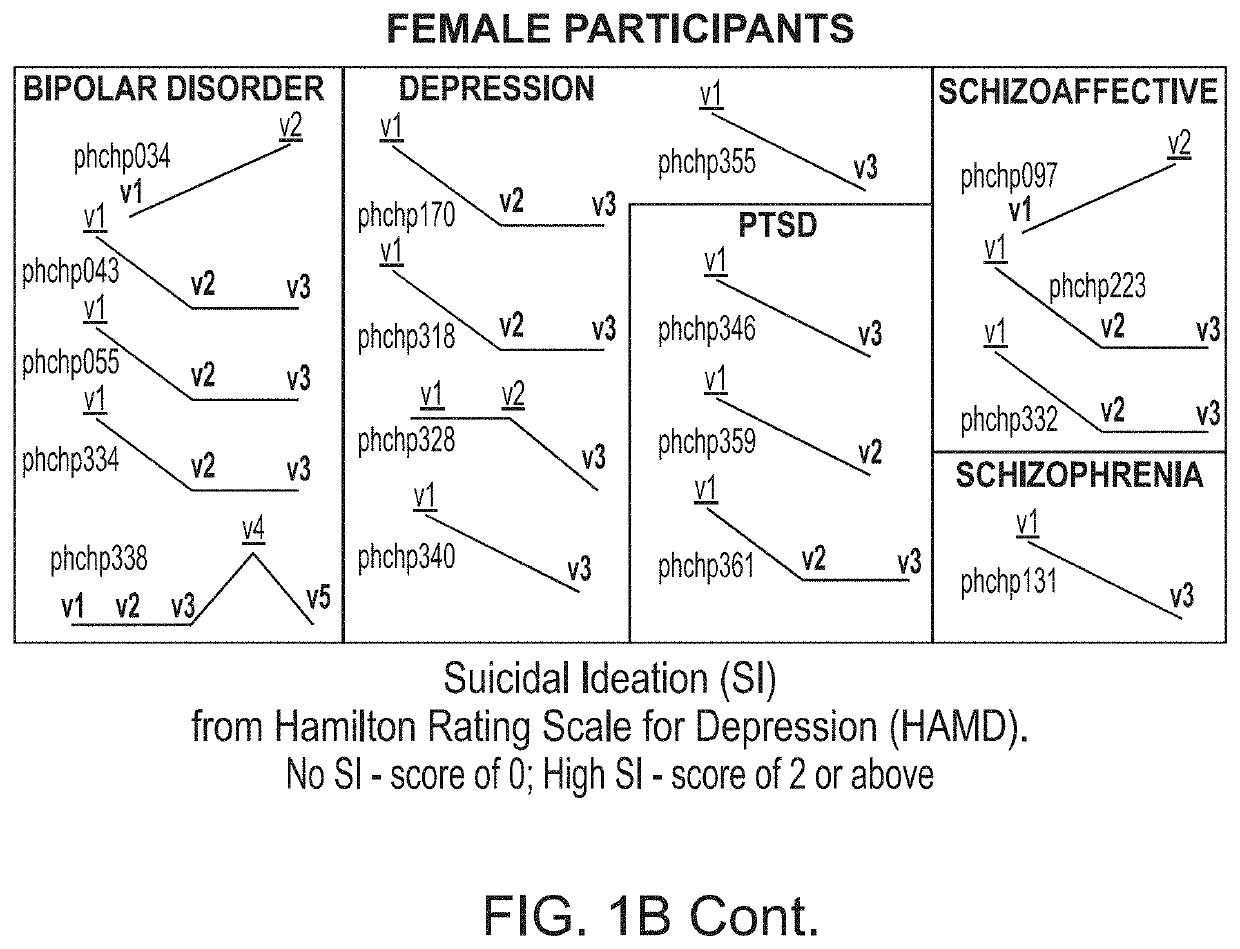Precision medicine for treating and preventing suicidality
- Summary
- Abstract
- Description
- Claims
- Application Information
AI Technical Summary
Benefits of technology
Problems solved by technology
Method used
Image
Examples
examples
[0059]In this Example, blood biomarkers from three cohorts of subjects were analyzed.
Materials and Methods
[0060]Cohorts
[0061]Three independent cohorts were examined: discovery cohort (a live psychiatric participants cohort), validation cohort (a postmortem coroner's office cohort), and testing cohort (also referred to herein as “test cohort”) (an independent live psychiatric participants test cohort for predicting suicidal ideation, and for predicting future hospitalizations for suicidality) (FIG. 1A).
[0062]The live psychiatric participants are part of a larger longitudinal cohort of adults that are continuously being collected. Participants are recruited from the patient population at the Indianapolis VA Medical Center and Indiana University School of Medicine through referrals from care providers, the use of brochures left in plain sight in public places and mental health clinics, and through word of mouth. All participants understood and signed informed consent forms detailing th...
example 2
[0138]As a comparator to the universal approach across gender and diagnoses, in this Example, a within-participant longitudinal biomarker discovery analyses in male bipolars only, the largest subgroup (n=20 participants, 65 testing visits) in our discovery cohort, was conducted.
[0139]Male bipolars are the highest risk group for suicide clinically, and have been the focus of earlier suicide biomarker studies, with an N that was less than half of the current one (n=9). The discovery step was followed by prioritization, and by validation in male suicide completers. Some of the previous biomarker findings in bipolar disorder (Tables 3B and FIGS. 3C & 3D) were reproduced and examined in this Example. The top dozen biomarkers (Table 3B), and all the biomarkers that survived Bonferroni correction after the validation, for prediction of suicidal ideation and for prediction of future psychiatric hospitalizations due to suicidality in the male bipolar subgroup (n=49) in the independent test c...
example 3
[0141]A list / panel of 50 biomarkers (BioM50) was generated from the biomarkers with the best evidence from discovery, prioritization, validation, and testing in independent cohorts, obtained with additional data, longer follow-up, and longitudinal analyses (Table 23, FIG. 10).
[0142]In this Example, the following abbreviations were utilized: validation: DE-differential expression, AP-Absent / Present. NS—Non-stepwise; Step 4 Predictions: C-cross-sectional (using levels from one visit), L-longitudinal (using levels, slope, as well as maximum levels and maximum slope from multiple prior visits); M-Males, F-Females. MDD-depression, BP-bipolar, SZ-schizophrenia, SZA-schizoaffective, PSYCHOSIS—schizophrenia and schizoaffective combined, PTSD-post-traumatic stress disorder. In ALL, by Gender, and personalized by Gender and Diagnosis. Score for predictions: 4 pts if in ALL, 2 pts Gender, 1 pts Gender / Dx. Bold name genes are also Bonferroni significant at Step 3 validation.
[0143]To generate th...
PUM
| Property | Measurement | Unit |
|---|---|---|
| Atomic weight | aaaaa | aaaaa |
| Atomic weight | aaaaa | aaaaa |
| Molar density | aaaaa | aaaaa |
Abstract
Description
Claims
Application Information
 Login to View More
Login to View More - R&D
- Intellectual Property
- Life Sciences
- Materials
- Tech Scout
- Unparalleled Data Quality
- Higher Quality Content
- 60% Fewer Hallucinations
Browse by: Latest US Patents, China's latest patents, Technical Efficacy Thesaurus, Application Domain, Technology Topic, Popular Technical Reports.
© 2025 PatSnap. All rights reserved.Legal|Privacy policy|Modern Slavery Act Transparency Statement|Sitemap|About US| Contact US: help@patsnap.com



